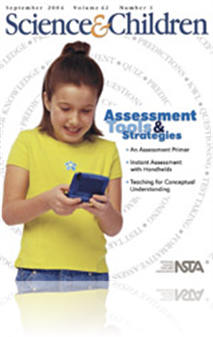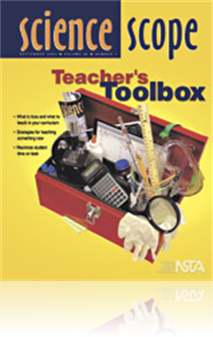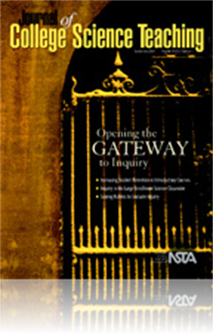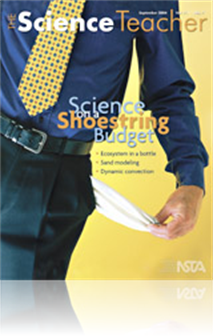All Resources
Journal Article
Assessment in the Palm of Your Hand
Project WHIRL, a three-year-grant from the National Science Foundation, enabled researchers from SRI International’s Center for Technology in Learning to collaborate with fourth- through ninth-grade teachers to create new assessments for science cl...
Journal Article
We all know lots of sayings about gravity. "What goes up must come down." "You fail to understand the gravity of the situation." Gravity is the name we give to the phenomenon that any two masses, like you and the earth, that attract each other. Thi...
Journal Article
Scope on Safety: It's hard saying goodbye to an old flame
Given the concerns about alcohol lamps and the relatively high frequency of accidents, are there any viable alternatives for heat sources? Yes! Depending on the amount and consistency of heat needed for middle school science experiments, there are at...
Journal Article
Methods and Strategies: Strategy Makeover—K-W-L to T-H-C
The K-W-L strategy works well as a preassessment tool because it reveals what students know and want to learn about a topic before instruction and as a postassessment tool because it fosters reflection. Minor modifications to the strategy can incorpo...
Journal Article
Tried and True: Traffic control tips for hands-on labs
The following are some tried and true methods of avoiding materials management and traffic problems associated with hands-on activities. While each class has its own personality and each teacher has his or her own style, these tips can be useful and ...
Journal Article
Outbreak! is an online, interactive educational game that helps students and teachers learn and evaluate clinical microbiology skills. When the game was used in introductory microbiology laboratories, qualitative evaluation by students showed very po...
Journal Article
English Language Learners in the Science Classroom
What can we as teachers do to help English Language Learners (ELLs) learn science when we do not speak their languages or know their cultures? Both pre- and in-service teachers have successfully used the following strategies in teaching in teaching ...
Journal Article
Teaching for Conceptual Understanding
A series of lessons were taught in a second-grade classroom to assist students’ conceptual understanding of celestial motion. After assessing student misconceptions about space and the movement of planets and the Sun, the teacher engaged the studen...
Journal Article
With a little direction and a few resources, students can be scientists at home in a way that is rewarding to the teacher, students, and their families. Through “My Own Science,” a home science program, students are able to choose, research, dev...
Journal Article
Career of the Month: An Interview with Deep-Cave Explorer Barbara Anne am Ende
Barbara Anne am Ende first learned about the wonders of caving during a simple visit to a commercial cave at the age of 14. Shortly thereafter she took a spelunking tour (studying caves and their contents) and was hooked; she joined the National Sp...
Journal Article
One of the most abstract concepts that you will teach to your students is the concept of time. Usually introduced at the beginning of the school year, the concept of time is taught along with measurements and scientific units such as length, mass, an...






